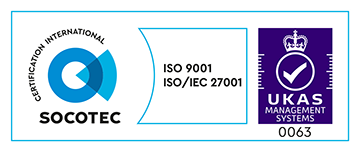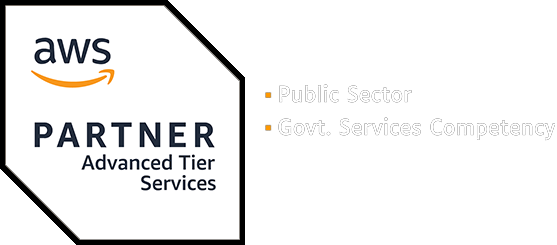This afternoon I had the opportunity to sit down with Product Manager, Jack Ricketts to discuss the government’s new Building Safety Levy (BSL). As well as answering questions about the new levy, Jack shares how stakeholders from different organisations are coming together to define a solution that will result in faster processing and accurate reporting for everyone.
-Interview begins-
Could you briefly explain what the Building Safety Levy is and its purpose?
The BSL was initially announced in 2021 and the purpose of the levy was to recoup the money the government and treasury had spent on remediating existing buildings. So when landlords and building owners were told to fix the cladding, leaseholders were finding invoices and bills coming through their letterbox of thousands of pounds and the government took note of this and identified that this wasn’t fair.
The levy allows housing developers to be charged a certain amount on the revenue of any new homes they are proposing to build, and this money would be used to backfill the hole. The government needs to raise about £3b and this will take about 10 years or so.
At the beginning of 2023, we did an 8-month piece of discovery with the MHCLG team, local authorities, contractors and building control inspectors. The output of this was a visualised process of the current levy application and management process generally used by councils, together with the challenges with the current process, as well as a new process for the Building Safety Levy. From this, we have built a prototype which we can share with stakeholders who are interested in seeing our proposal and getting involved in shaping it further.
Fast forward to late 2024 MHCLG said that this levy was going to be implemented in October 2025. Before that happens there will be new legislation on how it’ll be implemented, along with practical guidance on how this will be done.
The government have also said, that just like existing levies, it will be the responsibility of the local authority to process the levy and pass it on.
So what Made Tech are doing is building a service for building and administering the levy as easy and straightforward as possible.
Where did this £3bn hole come from and is the levy intended to cover future remediation works?
Within the building safety program, there are a number of funding streams that support remediation.
Building owners and people responsible for buildings can apply for the funding streams. They must meet the criteria, and demonstrate the work that needs doing and the cost. If they can prove this, then the remediation work can take place and is funded by the government.
The simple reason [the government offers this funding] is so that the work will be done quicker.
The levy is designed to help support funding.
How will the new levy impact local authorities, contractors, developers, and residents?
For local authorities: all local authorities collect financial contributions from housing developers to off-set the impact of development, some collect levies, some collect Section 106. The way that it’s processed now is a very manual, time-intensive process, which is very much dependent on case management systems and spreadsheets. There is a lot of personal knowledge; levy officers are known to have a lot of information in their heads. For example, remembering to follow up with contractors in two years’ time.
The processes don’t take advantage of the technology today because they were set up on software and systems from 10 years ago.
For developers, they want this to be as easy and straightforward as possible; with consistency across the country in terms of how the process is done.
For residents, the public wants and should be able to see what money has been paid by developers to local authorities and to see evidence of this being passed on.
How does the Building Safety Levy differ from other levies?
The difference between the Building Safety Levy and the Community Infrastructure Levy (collected by about half the local authorities) and the Mayoral Infrastructure Levy is that the community one is paid to local authority and used to fund infrastructure such as schools, hospitals and highways. The mayoral is collected by London local authorities and transferred to TFL [Transport for London] to repay the Crossrail funding.
The difference between those levies and the Building Safety Levy is the interaction with building control. Housing developers are not allowed to receive their completion certificate until the local authority has received the Building Safety Levy.
The reason for this is because the housing developer needs the certificate in order to sell their properties. The other levies do not have this level of enforcement.
Legally, developers must notify authorities when they reach the point of paying the levy. However, because it’s not an automated process, it can take quite a lot of time to find out if those existing levies have been triggered and to contact them with costs.
In some cases, these costs are disputed, or the developer doesn’t notify the authorities in a timely manner, which can also cause delays.
Local authorities and suppliers haven’t kept pace with the evolution of technology. This new levy presents an opportunity to do that. The best technology that’s available now, isn’t as expensive as it once was either to meet the needs.
How does the levy support the government’s broader goals in building safety and compliance?
The government need to replace the public money that they have spent on remediation to date. The Building Safety Levy has been decided as the most efficient way of replacing public money with private money so it doesn’t continue to cost the public money.
By making the collection and transferring the money in an efficient manner, it’ll give everyone confidence in what’s being built and demonstrate the transfer of money. This is really about transferring private money into public value.
What changes do local authorities, contractors, and developers need to make?
The difference with this levy is the integration with building control. When developers want to build new homes they need planning permission and building control approval – they can only go to the local authority for planning permission, but for building control, they can use the local authority or they can choose to go to one of the many private building control companies.
The problems local authorities experience with developers going to private sector building control is that communications between building control and local authorities isn’t always transparent and clear; for example, when buildings have commenced or completed that isn’t always reported back to the local authority by building control or developers making it difficult for local authorities to know what state the building is in – and in the case of Building Safety Levy, building control may accidentally issue certificates to developers without them paying the levy.
Private Building control companies would need to own the process of checking with the local authority to see if they have paid their levy, but they are timebound to issue the certification to the developer and cannot withhold the certificate.
I anticipate this is where the levy could come unstuck: however we have a plan for that.
What does the Building Safety Levy product do, and how does it support stakeholders in complying with the levy?
What differentiates our service is a number of things:
Firstly, it’s user agnostic: within the local authority the service can be used by the planning team, it could be used by a building control officer, or by finance; That means that it’s not restricted to one role or department..
Also, this service will be integrated with The Planning Portal. The importance of that is that all the information that’s required for the Building Safety Levy is contained within the planning application; so rather than planning officers having to add that info into a separate system, it’s automatically pulled from the plan and added to the system, eliminating manual entry and error. It also means that the data in BSL service is the same as in the corresponding planning application.
Our service isn’t dependent on any other IT system and doesn’t need to integrate with any other case management system – and that’s important because that’s where the projects tend to grind to a halt. All of this information will be available on an API to integrate with other systems but isn’t necessary to process the levy.
The other advantage is that it will put the onus on the developer to make sure the information they have provided is up to date.
Quite often there is a long period between the application submission and when the homes are built. During that period it’s quite common that the proposal will change – building more or fewer homes, or the type of homes they are building.
Currently with existing systems, local authorities can’t consistently track these changes with confidence..
With our system, the onus is on the developer to keep it up to date. It will keep a complete and accurate audit trail of the status of every single development, making it visible where there are inaccuracies; from original planning application submission through to building completion.
The ‘tying in’ of the named building control approver, whether local authority building control, private inspector or the Building Safety Regulator, will be able to log in to the system and see what’s relevant to them or update the status of the build.
This will enable them to upload the building completion cert to the system to confirm everything is completed without additional admin on their part., The certificate is then held in a form of escrow until the levy is paid [without delaying the sale of the houses or progression of works].
Because it will be tracking all of this data and management info that MHCLG need (as part of the collection process) – all of that data will be available and reported on, in ‘real time’ with no additional admin burden for the local authority – no more manual quarterly reporting via spreadsheet and email.
A quote from Barnet, ”it looks very much like an air traffic control system” – the person in the local authority can watch the levies flow through the system, in ‘real-time’ from start to finish without having to intervene. They only need to step in when something doesn’t look right.
Why did Made Tech decide to create this product now?
I was a levy manager for 7 years so I have experience of processing levies within a local authority and the issues and pain points with the current way of doing it.
Our background in working with local authorities means we’ve been able to bridge all these stakeholders together.
It’s only with a service like this we can ensure the right amount of money is levied and then passed quickly and efficiently to the government for the purposes of remediations.
As an agency, we can utilise our UCD [user-centred design] and engineering expertise, as well as our outsider perspectives to look at the problems and needs in a way that isn’t biased by the more traditional ways of working.
What’s really key, and what differentiates it from other pieces of work is that we’re building a broad base of stakeholders.
Not only are we working with partners from Barnet and The Planning Portal, we’re also working with organisations like GeoPlace and private building control companies, as well as engaging with multiple local authorities, HM Land Registry, the Planning Advisory Service, the GLA and TfL, to name a few – to make sure we’re building something that works for all stakeholders.
—Interview ends–
Learn more about Made Tech Building Safety Levy
So far we’re working with the London Borough of Barnet to design and develop this service. As we get closer to the launch of the Levy we’re seeking to engage with more authorities and building control bodies, to co-create a true best-in-class levy service for local government, by local government.
To demonstrate the work and our plans for the next few months, we will be hosting an online presentation on the afternoon of Thursday 13th February 2025.
We will showcase the research underpinning this service, demo the prototype, and hear from Barnet, The Planning Portal and a private sector building control body, as well as other stakeholders. We will also talk about the work we’ll be doing before the legislation and guidance in March, and how we will be developing and testing the service in time for Autumn 2025.
If you like an invitation to the presentation on Thursday 13th February 2025, please email jack.ricketts@madetech.com.
In addition to this presentation, we’ll be holding a number of regional workshops in February and March, to help us understand your needs from the service and enable us to provide a solution that delivers for every user, in every authority.
Please let us know, at jack.ricketts@madetech.com, if you would like us to come to you.




